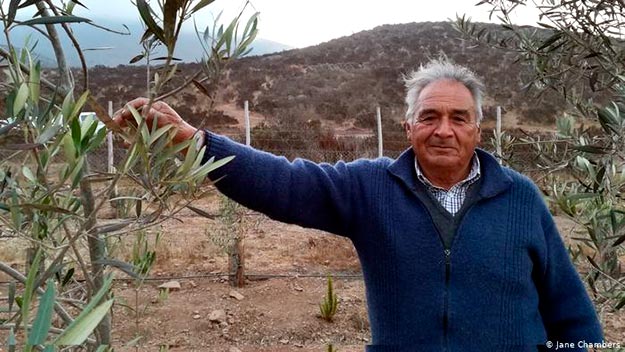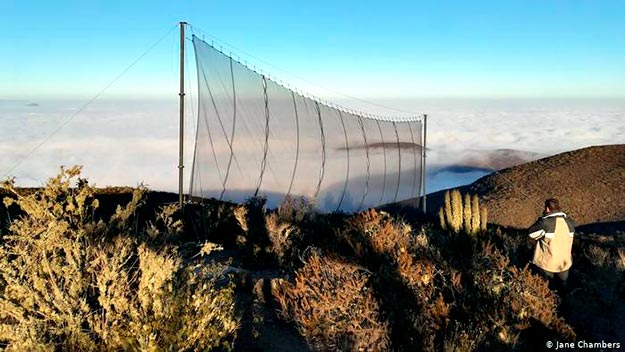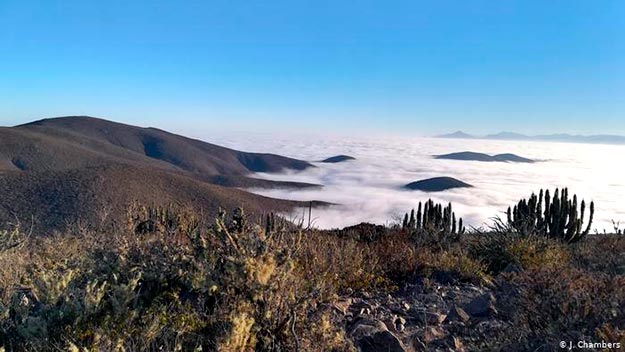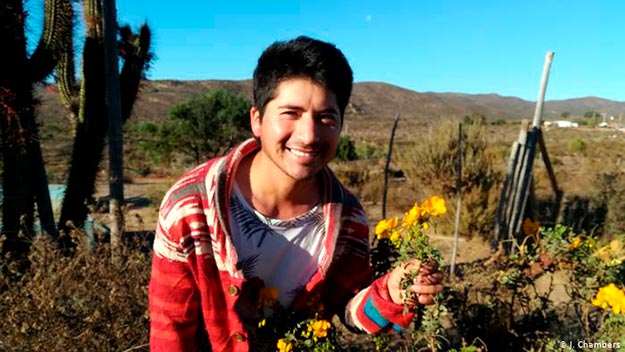Farmers in northern Chile, one of the driest regions in the world, are learning to adapt to drought after discovering a new source of water — fog-catching nets.
Since December last year, the Coquimbo region of northern Chile has officially been suffering a drought emergency, and this is just the latest in a succession of parched years. But a surprising source of water is helping local farmers adapt to ever-drier conditions.
Villages in the region are typically made up of shacks with no running water. For electricity, these communities sometimes need to use a generator. They rely on the local government to deliver water in trucks, but say it isn’t enough to meet their needs.
Good years and bad years
Jose Ossandon lives in the community of Los Tomes with 19 other families. Most of them keep animals — cows, horses, sheep and goats.
“In the good years when we have rain, we can sell our livestock at a decent price,” Ossandon told DW. “But in the bad years, when there is no rain, it’s a lot tougher because there is no food for the livestock and we have to sell them for a bad price.”
Catching fog in the Moroccan mountains
As a result, many people from the region have migrated up north to work in the mines, or down south where there is more pasture for their animals. But Ossandon, who is president of the local community, chose to remain. He still loves the tranquility of the scrubby, mountainous landscape where his family has lived for generations.
And now, technology to capture water from the atmosphere offers new hope for Los Tomes. The Catholic University of the North chose several rural communities with the right conditions to try out its fog-catching nets.
Harvesting fog
Daniela Henriquez works in public policy at the university and is one of the people in charge of the project. “We chose communities that are 25 kilometers [15.5 miles] or nearer to the sea because that is where we get the best fog,” she told DW.
The process is relatively simple: The fog catchers are installed on top of a nearby mountain where the wind pushes airborne moisture through the nets. The water then drips down to a plastic gutter at the bottom of the net, and into a pipe.
“We have two fog catchers which feed into a water trough for our livestock,” Ossandon says. “We’ve had very good results from it. The animals have clean water and they can stay up in the hills in their pasture and don’t need to come down to the village for water.”
From the hills close to Majada Blanca a sea of fog is visible. Now the community can make use of that water
The water tanks are scattered through the hills to encourage the animals to feed from new areas of pasture. There are also plans to use the fog water to grow more pasture.
Depending on the density of the fog, 1 square meter (10.7 square feet) of net can produce between 2 and 7 liters (0.5 and 1.8 gallons) of water per day. The nets here are 60 meters square. In the midst of a severe drought, this extra water has been very useful for Ossandon and his community.
Living with drought
The cost of a single net, including installation, is around $8,000 (€6,827). The community wouldn’t be able to fund the project on its own. Most people in these mountain communities barely survive on around $100 to $200 a month, well below the minimum wage.
The Catholic University of the North and the local government are funding the project with the aim of testing the technology while preserving the region’s rural way of life by helping people adapt to the changing conditions.

Ricardo Juan Alvarez in the olive grove his community has been able to plant, thanks to the fog nets
Henriquez stresses the importance of the community eventually taking over ownership of the project and deciding how the water should be used.
Los Tomes uses the water mainly for livestock. Majada Blanca, another community testing the fog catchers, has fenced off a parcel of land that now contains six rows of olives trees. High up on the mountain, the square nets provide the trees with much-needed water.
“We used to look at the fog up on the hills, but we never guessed that we could actually use it,” Ricardo Alvarez of Majada Blanca told DW. “And then someone came from the Catholic University of the North who was experimenting with ways to use fog and this has helped us with our olive grove.”
Once the olive trees are mature, the community wants to make olive oil to sell to local supermarkets. They say it will be the first olive oil made using fog water.
Drawing back the youth
Because of the drought, young people in particular are leaving these communities. Alvarez hopes they will come back to help with the olive oil business.
In Los Tomes, Ossandon’s son is the last pupil at the local school because so many families have moved away.
There is better news in the communities of Lorenzo Peralta de Punilla and Peral Ojo de Agua de Punilla, where the fog-catching nets are already inspiring young people to come home. Jorge Velasquez and his brother Salvador are among them. They have started an ecotourism business.
“We came back here because we really love the wildlife and flowers that grow here and we want to teach tourists about them,” Jorge Velasquez told DW.
With their community’s support, the brothers have created a nature reserve watered by the fog net. They hope to get more nets to provide drinking water.
The ability to adapt and regenerate is key to these communities’ survival. This project is just starting out, but the hope is that it will help them live with the ongoing droughts.
Source: https://www.dw.com/
Dear User/Visitor! Please, answer on our questions: tick off one of the positions – your answer will make us able to improve our site and make it more interesting and useful!




